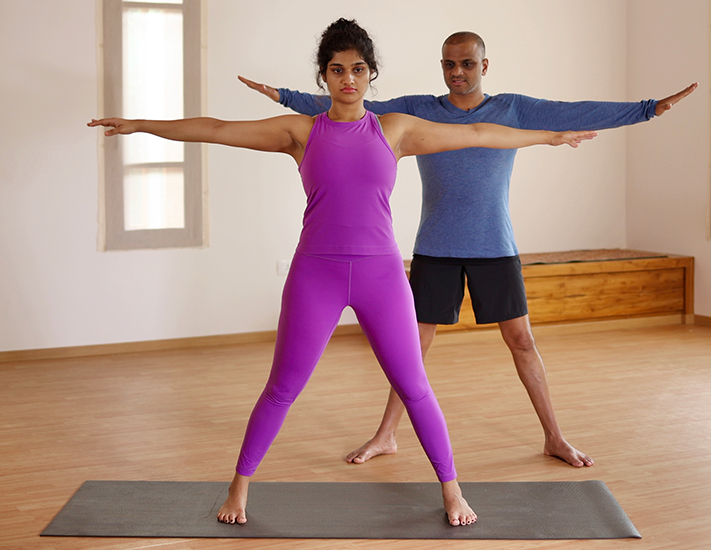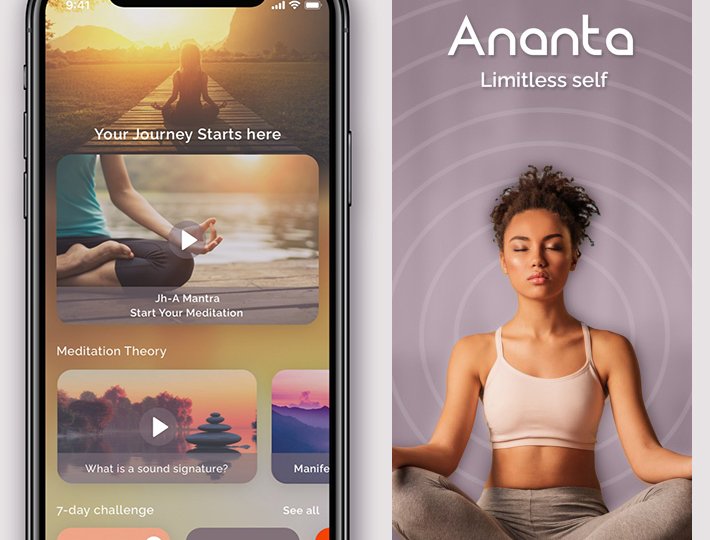After leading meditation class, I’ll often ask participants about their experience and, on occasion, one will respond, “Do you ever play music during meditation?” Usually, I’ll discover in a brief conversation with this person that they have trouble sitting quietly with their own mind and breath. I totally get that. If someone tells me that they have trouble focusing or they are bored during their meditation practice, I am always the bearer of bad news: Meditation can, indeed, be hard and boring. Sorry (not sorry).
The good news is this isn’t always the case. One experience may feel boring or exhausting, but not all. You can—and will, if you stay with it—have many others that you enjoy. Some days your mind is very relaxed and creative; the next it may be filled with anxiety; the following simply restless and not wanting to focus. In that way, meditating is like taking your mind on a roller coaster; sometimes you’re up, sometimes you’re down, and if you hang in there, you expe-rience both.
One of my favorite words for meditation in the Tibetan language is gom. Gom can be translated as “meditation,” but I prefer the direct translation, which is “familiarization.” When we board the meditation roller coaster, we must realize, we are becoming familiar with all of who we are, in-cluding the brilliant parts of ourselves and the neurotic parts as well. The more we become famil-iar with the totality of who we are, the more we befriend and, ultimately, accept ourselves com-pletely, instead of constantly trying to level up and be something else.
Music, too, can allow us to relax enough to remember who we are, much like meditation. Years ago, I surprised my then-girlfriend (now wife) when she came home by swooping her into my arms and dancing with her to John Legend’s “All of You” (it was the hit of the summer). This unforgettably sweet instance made it a natural choice for the first song at our recent wedding. The second the opening lines of the song played at our reception, the hundred or so friends and family disappeared, and I was back in that moment of just the two of us, intimately relaxing into one another. This is different than concentration meditation, where we aim to bring our focus back to an object, like the breath, over and over again. Here, I am talking about simple relaxation into a moment.
Where music and meditation come together, in my opinion, is when we talk about the mindful-ness of sound. In one meditation technique, we are instructed to bring our attention to the breath, but we also are supposed to bring our attention to everything else that we experience through our sense perceptions. That means feeling the body breathing right alongside noticing the color of the floor ahead of you, the smell of the incense burning, the feeling of the weight of your clothes on your skin, the taste of your saliva as you swallow and, perhaps most palpably, what you hear in the environment around you.
To return to the notion of “becoming familiar with,” this practice is not about lulling the mind into a state of ecstasy because you hear a lot of pleasant sounds. Instead, it’s about being there for reality as is. Yes, some nice sounds might pop up as you settle into your practice, like the snoring of your dog beside you. But if you live in a busy city as I do, you might hear your neigh-bors yelling at each other, too. We become familiar with all of it. Instead of rushing to give into the (very human) tendency to label things in the “I like this,” “I don’t like this,” and “I’m going to ignore this thank-you-very-much” categories, we can relax and be with all of the sound that is occurring.
Related: A Meditation to Enjoy the Great Outdoors
If you are interested in experimenting with this form of meditation, I recommend starting by just focusing on the breath for a period of time. If you are new to meditation, start with five minutes. If you are more experienced, go for 10. Open your senses up to the environment. It’s helpful to begin by listening to what you hear and then you can, at your own pace, expand into noticing what you see, smell, taste and even the feeling of touch.
Don’t get too lost in one aspect of your senses; this can be a holistic experience. You are aiming to be with all of what is happening in the present moment. If music is playing, great. If not, okay. When you get distracted and start thinking about your to-do list for the day, simply come back to feeling the body breathing, then expand outward to include your sense perceptions once more.
While music can be moving and powerful, and meditation can (at times) be the same, these are two things that serve different purposes. Yet, when we decide to bring our sense perceptions into our breath meditation, we are expanding our training by learning to be with our world on its own terms, as opposed to how we wish it were or how it used to be. That is a training in sound that is invaluable for everyday life.








Comments (0)